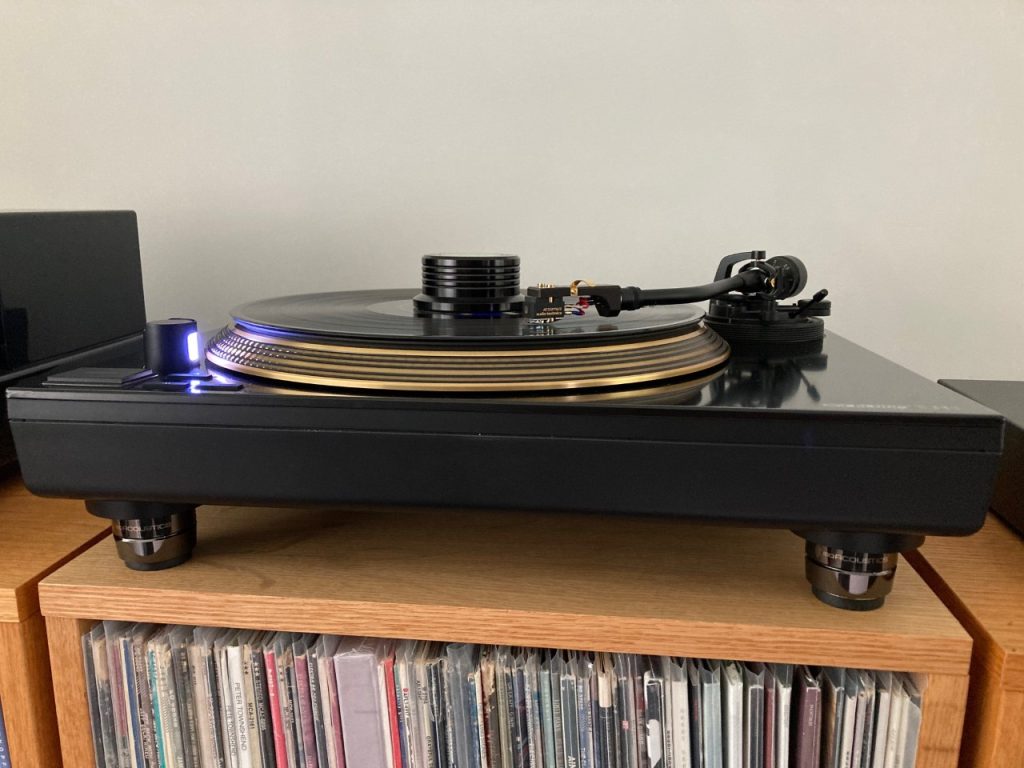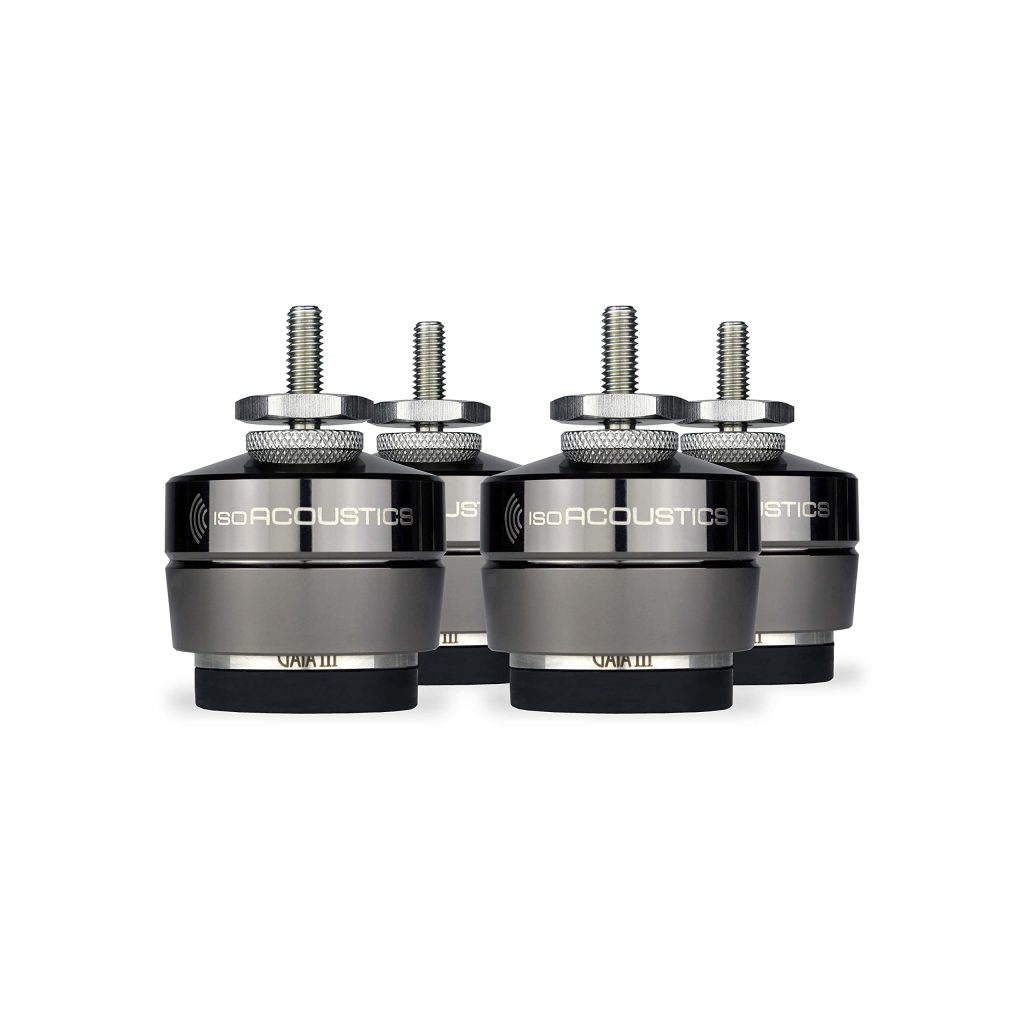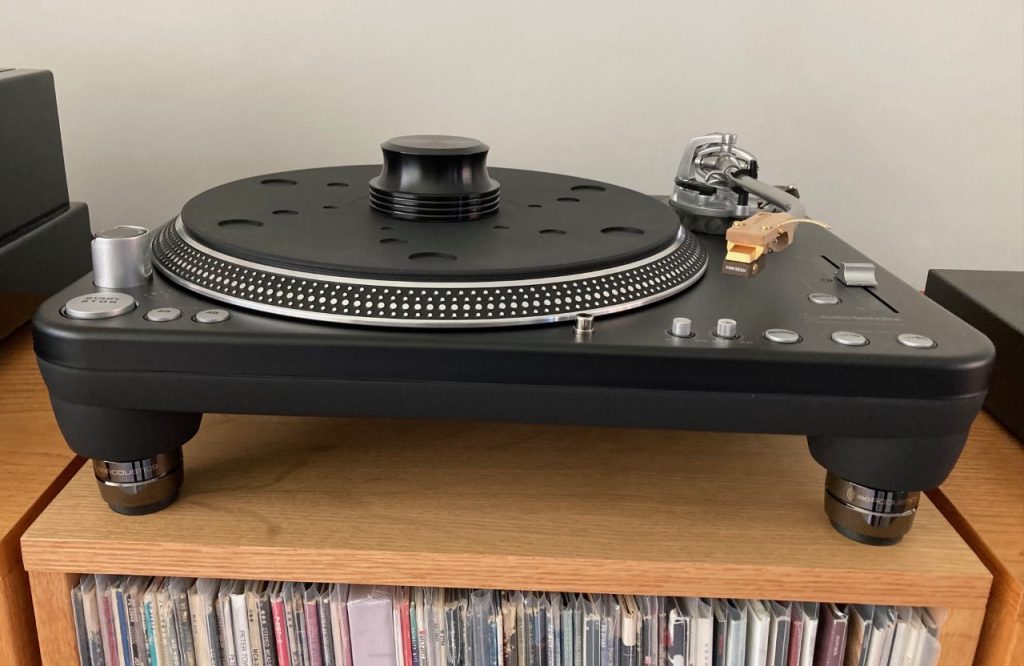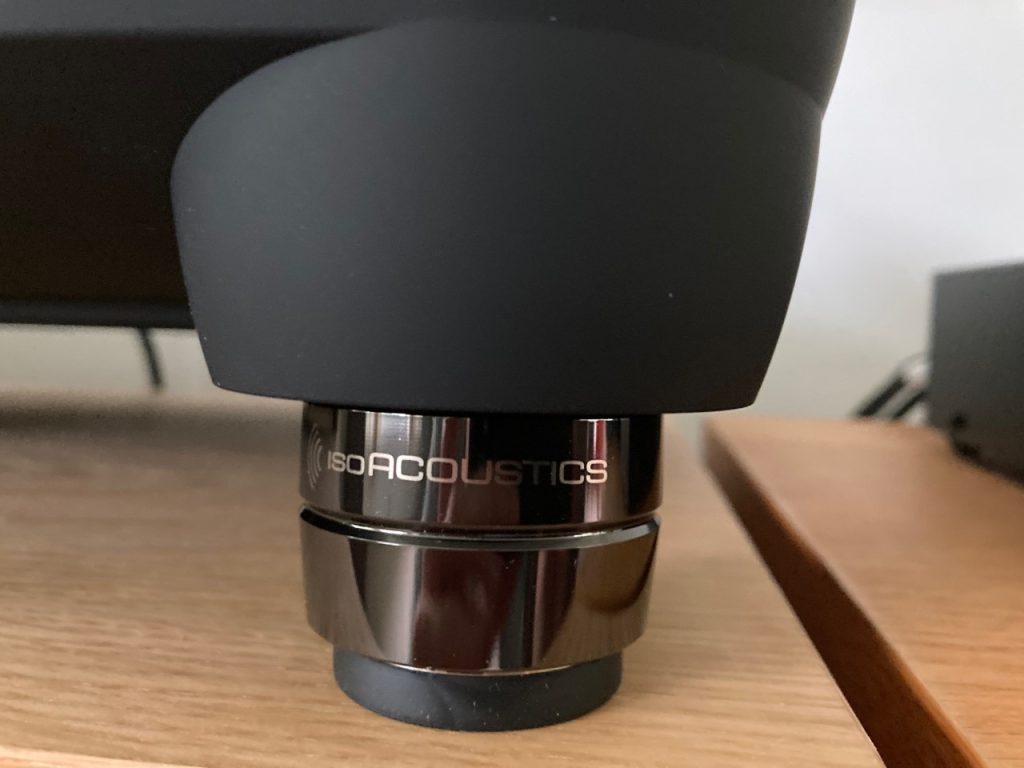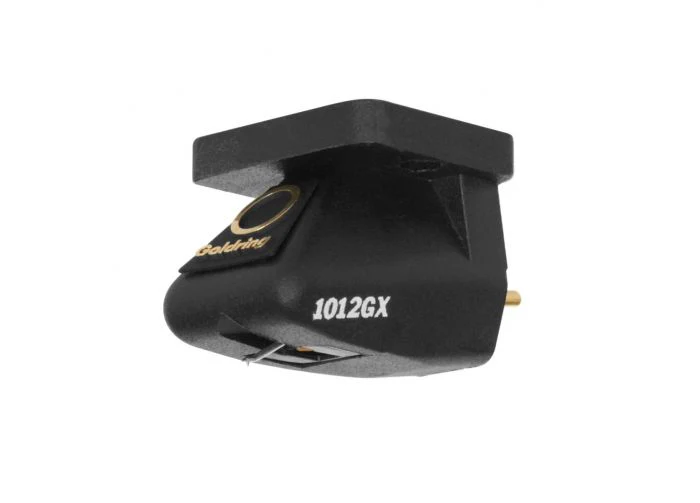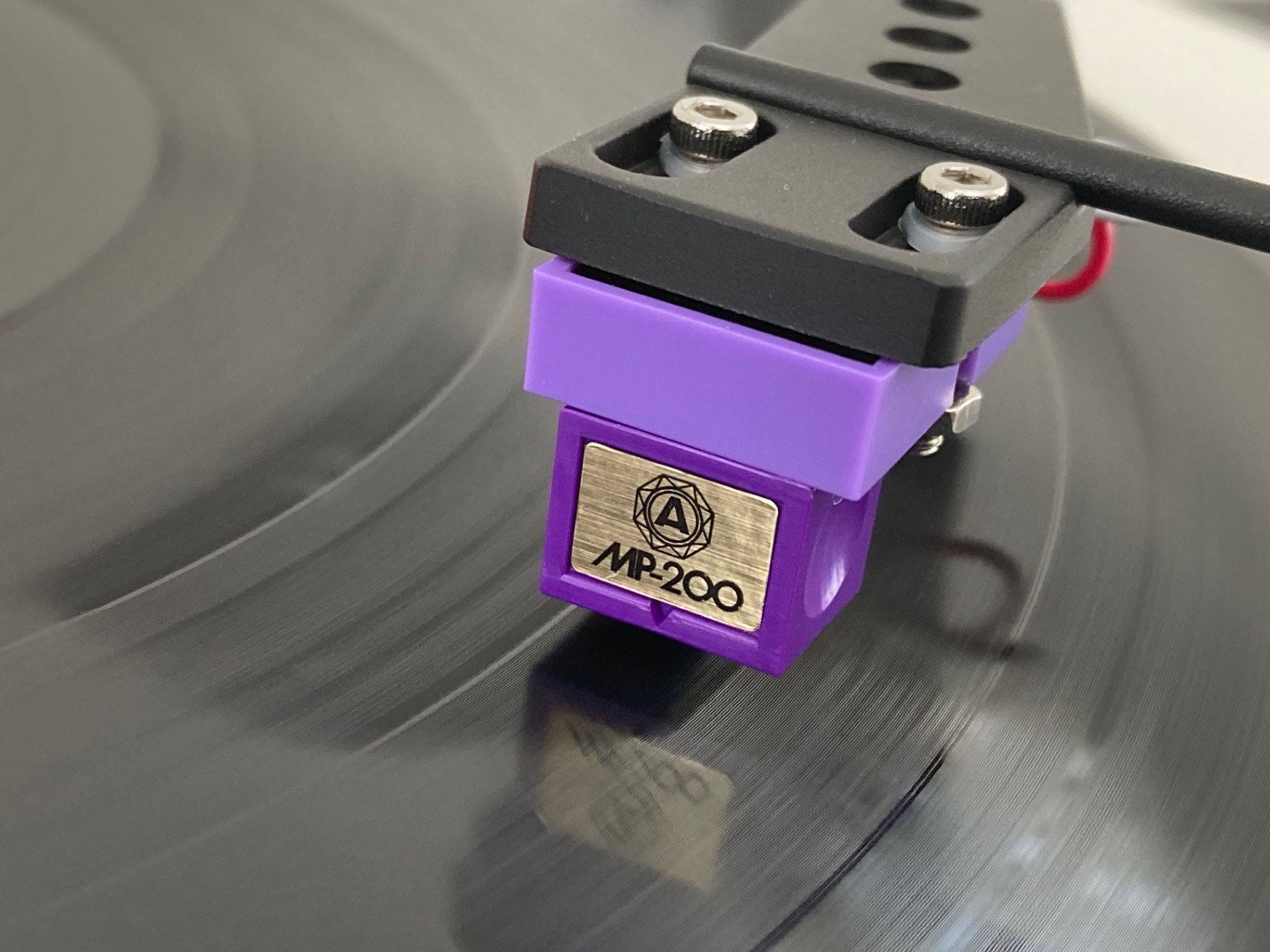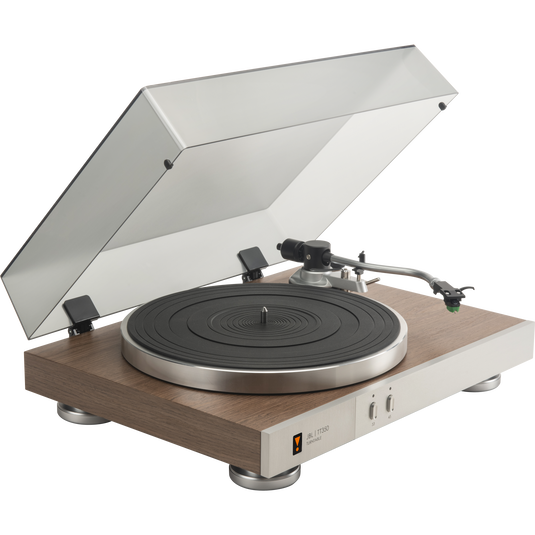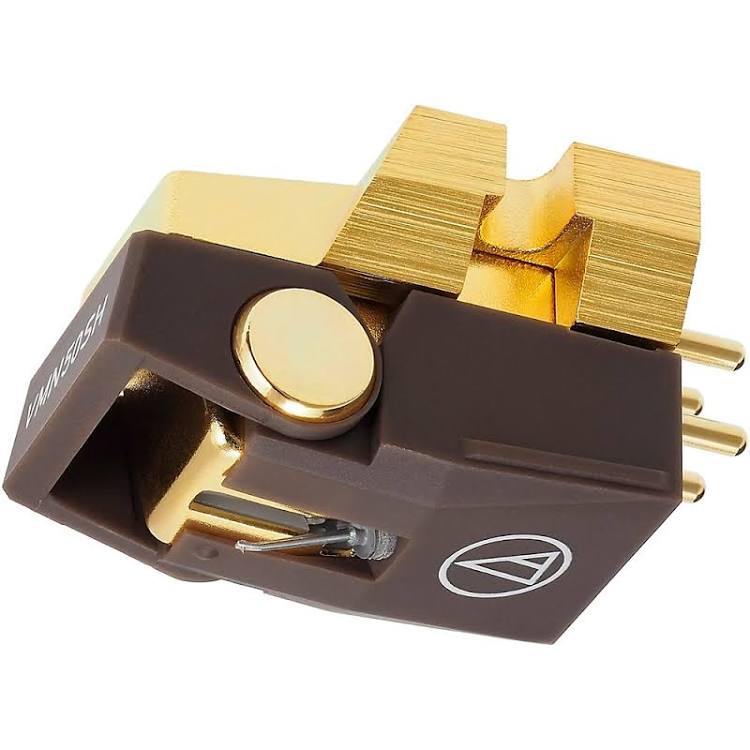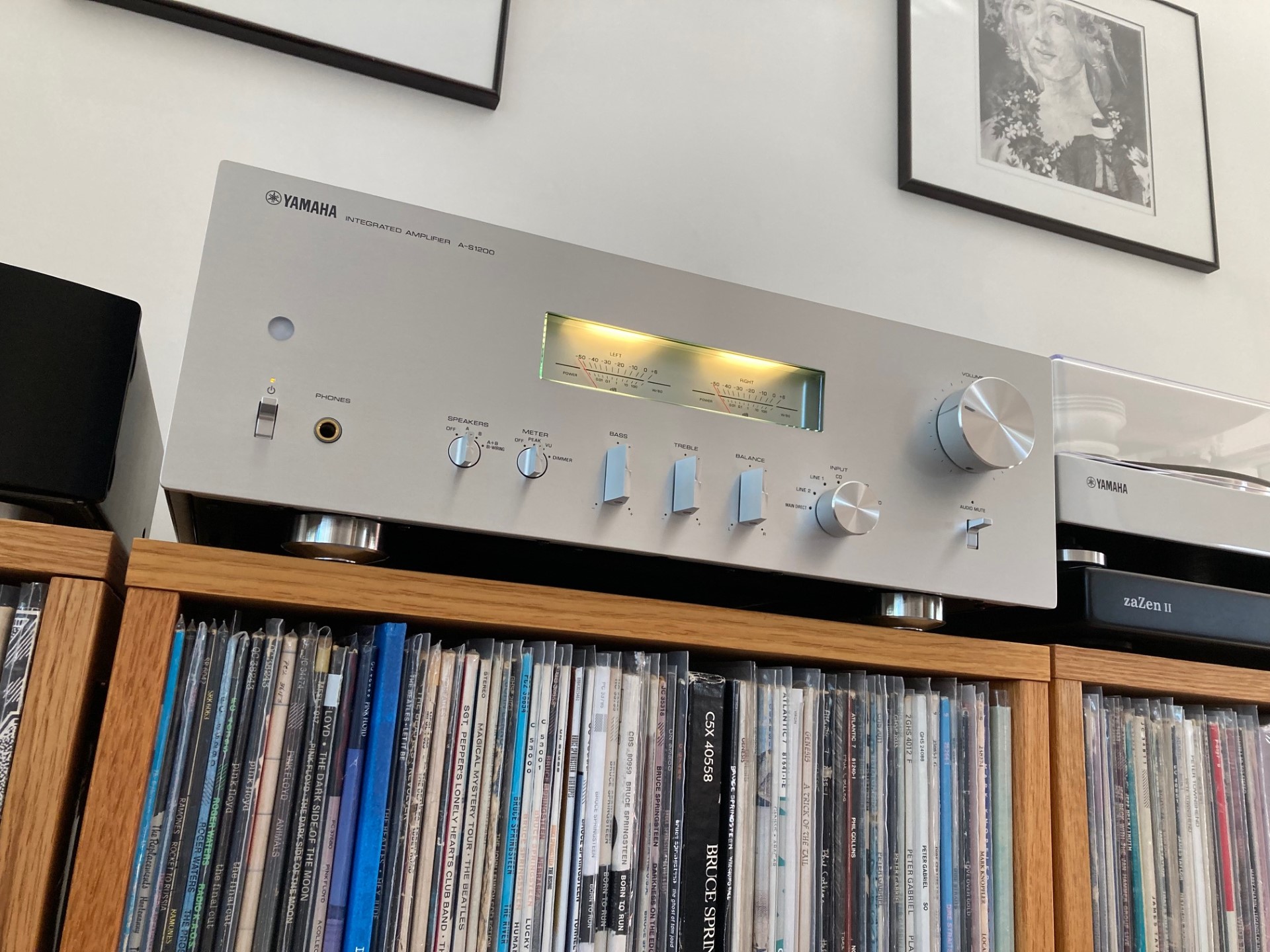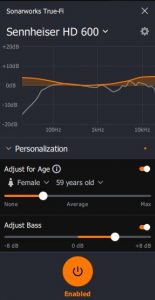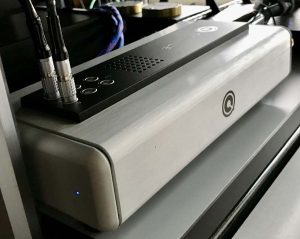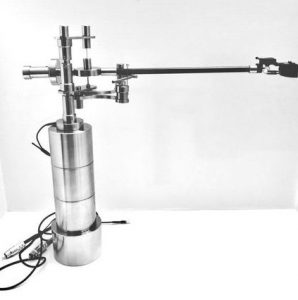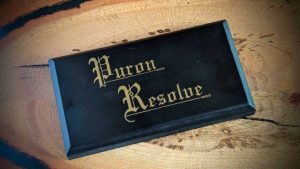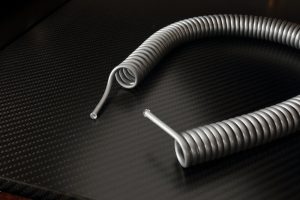Speaker isolators…for a turntable? Yes, according to the folks at IsoAcoustics, or at least their surprisingly comprehensive online product selector tool. I wasn't expecting to find my audiophile-unapproved, direct drive turntables in the drop-down box, but there they were. And at the top of their list showing recommended vibration control devices were the GAIA-III screw-on thingies.
Now, this kind of thing isn't generally my bag, man. I'm not an obsessive tweaker or cable swapper. But when it comes to mechanical devices like turntables, I'm more open to try aftermarket sub-platters, mats, counterweights, and the like–especially when, like the GAIA-III, they cost only about the same as a budget cartridge. At $200 for a set of four, the GAIA-III are designed to support speakers up to 70 pounds, so they'd seem to work well with two stout, 30-pound record players.
As for specifically why I'm bothering with aftermarket isolation feet, the reasons are simple. My system resides in my second floor living room. The components are perched not on an equipment rack, but rather, atop my fully-loaded Per Madsen LP racks. The stock feet on my (or any) inexpensive tables aren't generally designed with a scientist's eye for dissipating energy and providing protection from micro-vibrations; they're more often made to absorb footfalls as well as the kinds of big thumps that are more common in club environments than domestic living rooms.
But the Audio-Technica and Reloop DJ decks present another unique challenge: uneven weight distribution. The more conventionally-accepted feet from other manufacturers tend to bottom out, like an overloaded automobile suspension, at the heaviest corner. Would the GAIA-III help solve this?
In short, the answer is an overwhelming yes…and then some. However, there are trade-offs. As expected, the GAIA-III aren't springy, disco-approved bass beat absorbers. So if you want to listen to records while playing a vigorous round of fetch with your Newfoundland, or wrestling your kids while blasting Run-DMC, look elsewhere.
Robert S. Youman reviewed the larger GAIA-I isolators for use with speakers in issue 113, and you should read it because he has a better handle on how these work than I do. He and I differ a little when he says, "I have a great deal of respect for isolation devices." I don't. At the affordable end of the spectrum where I reside, they're mostly squishy balls and bullshit. The stuff that seems to actually work requires a level of technical sophistication–and money–that wouldn't make sense in a modest system like mine.
Then again, I wasn't expecting the world. A modest improvement over the stock feet would've been a happy result. Yet somehow, the GAIA-III feet delivered more. The IsoAcoustics website didn't quite shed a completely revealing light on what's inside these things and what those bobbins are made of, aside from a fancy diagram and this: "The effectiveness of the isolation is a result of the shape thickness, durometer and characteristics of their proprietary isolation material and the way the top and bottom isolators function together with the internal insert to manage vibrations." For all I know, they could stuff them with gummy worms and rusty springs, so I'll have to take their word for it. After all, as far as I can tell, you can't crack them open for inspection without sawing them apart.
Cynicism aside, the GAIA-III feet arrived in a nice little box with a very thorough assortment of common attachment screws, including the M6 threads I needed. IsoAcoustics provides a thin wrench for tightening the included lock nuts against the bottom of the speaker (or turntable) cabinet, but it's simply slid into a little indent in the packaging and not secured with tape, so naturally it came loose and rattled around during shipping, adding a few light scratches to the isolators.
For my purposes, the lock nuts were a challenge since the turntable feet sit in round recesses that even my spindly fingers, let alone a wrench, can barely reach into. If you also need to level your turntable, you have to estimate where the lock nuts will end up in the thread travel, or forego using them entirely. It's not a design flaw, just an inescapable fact of life when you're using a "universal" product designed to work with countless speakers and components. That said, they do allow plenty of adjustment for leveling if your furniture is a little lopsided, which is highly commendable. The logos aren't just for show either. They're designed to face forward, indicating that the internals are oriented properly for the job at hand since speakers fire toward the listener. I'm not sure this matters as much (or at all) with source components.
I can imagine these looking great on something stylistically minimalist like a Rega, as they're quite handsome and unobtrusive for what they are. Unfortunately, on my tables, they looked more like five-sizes-too-small ballet shoes on a linebacker. Not horrible, certainly, especially considering that the Audio-Technica table in particular isn't the most subtle piece of industrial design ever conceived. If you're picky about such things, consider the picture above before coughing up your credit card number.
Once installed though, those minor concerns quickly evaporated. The GAIA-III isolators actually work, and noticeably so. The improvements were similar to, say, switching from a mediocre stock turntable mat to something more effective. The soundstage widened, there was a general sense of greater clarity and organization, with backgrounds that at least seemed quieter, and from which the music emerged with greater boldness and contrast. I felt a stronger connection to the performance space due to a more palpable reproduction of ambiance and space.
This, of course, represents common sense when it comes to turntables. We're talking about machines that use eyelash-thin styli attached to wispy cantilevers for reading tiny vibrations in a microscopic record groove. Anything that keeps outside vibration and interference at bay, one way or another, should only allow those intricate parts to better do their jobs. Snake oil this ain't, and I've seen my share of scams over three decades of listening to music on decent to good equipment.
Confirming that I was indeed hearing what I thought is where the fun screeched to a halt. The only practical way I could think of was by listening to side A of a record, switching out the feet (and reasonably re-leveling things) and then listening to side B. This, of course, is highly imperfect, but certainly no less imperfect than concocting some kind of lab test to measure the transmission of vibration, and then assuming the winner must also sound better when installed on a turntable. I tapped out after a few evenings, but only after sampling some records I knew very well and which represented a range of rock, jazz, and classical.
The GAIA III isolators actually moved the $599 Audio-Technica a little closer to the $999 Technics SL-1200MK7 with its stock feet. Neither's strong suit is subtlety, but the Audio-Technica can sound particularly brutish when tasked with doing delicacy. With the isolators installed, this tendency was taken down a notch, bridging the gap with the more nuanced Technics. They didn't do anything to change the table's overall nature, and I wouldn't expect them to, but that teeny dash of sophistication went a long way on jazz and solo or small group performances where the Audio-Technica tends to shove everything to the foreground and give equal weight to disparate elements. If you own one of the sub-$1000 AT/Reloop/Pioneer/etc. DJ decks that I suspect are coming out of the same factory, but you pine for a $1699 Technics SL-1200GR and aren't quite ready to make the stretch, these isolators could be a partial stopgap–and, of course, being fully portable, you can simply transfer them to whatever model you eventually upgrade to.
To be very clear, GAIA-III isolators won't transform a bad turntable into a good one. But feet are often, and quite understandably, one of the most under-engineered parts of most affordable turntables, and these could make for a substantial step up. If your component's fundamentals are solid, the GAIA-III can help snap music into better focus by reducing the inescapable real-world intrusions of music listening, from a rumbling refrigerator or dehumidifier to the vibrations produced by your speakers.
Now, if my equipment were on a proper rack, would the GAIA-III make the same level of difference? I can't say, but they do seem especially good at targeting the kinds of small, constant vibrations that most profoundly muck up music reproduction via record playing. Think of them as equivalent to noise-canceling headphones on an airplane. Certainly, if your turntable is currently sitting on ordinary furniture (because that's what most people like to see in their homes), the GAIA-III isolators could be a fantastic compromise that may give you some (but hardly all) of the benefits that esoteric equipment supports do.
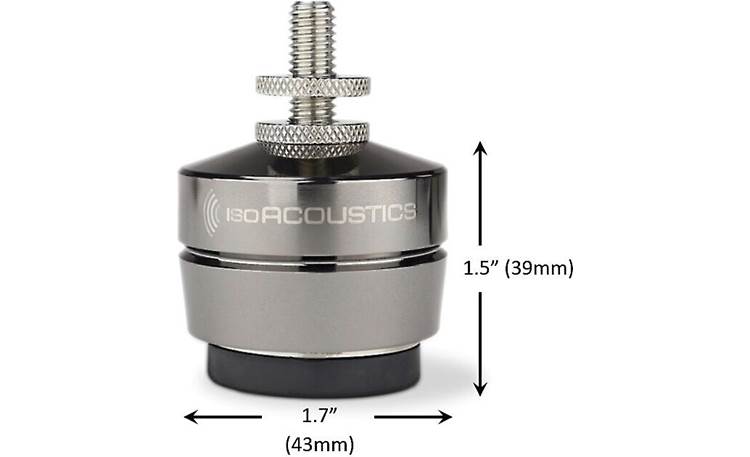
In my home, the GAIA-III isolators yielded an improvement akin to a successful turntable mat or headshell upgrade. That's not to say it's the same kind of improvement, though. What the GAIA-III does seems more fundamental, and more keyed to the overall structure of the turntable's cabinet. It's maybe a 5% difference–not a vague one but rather, one that attacks a common design shortfall central to a turntable's mission.
I have to say, under the right circumstances, I think I'd reduce my cartridge budget by $200 to accommodate the purchase of GAIA-III isolators because they'll help extract a bit more music and atmosphere out of your turntable across the long term, and ensure you're hearing things a little closer to their ultimate potential. I'll say it again: snake oil these ain't.
IsoAcoustics GAIA-III Isolation Feet
Retail: $200
IsoAcoustics Inc.
39 Main street North, Unit 5
Markham, ON, Canada L3P 1X3




